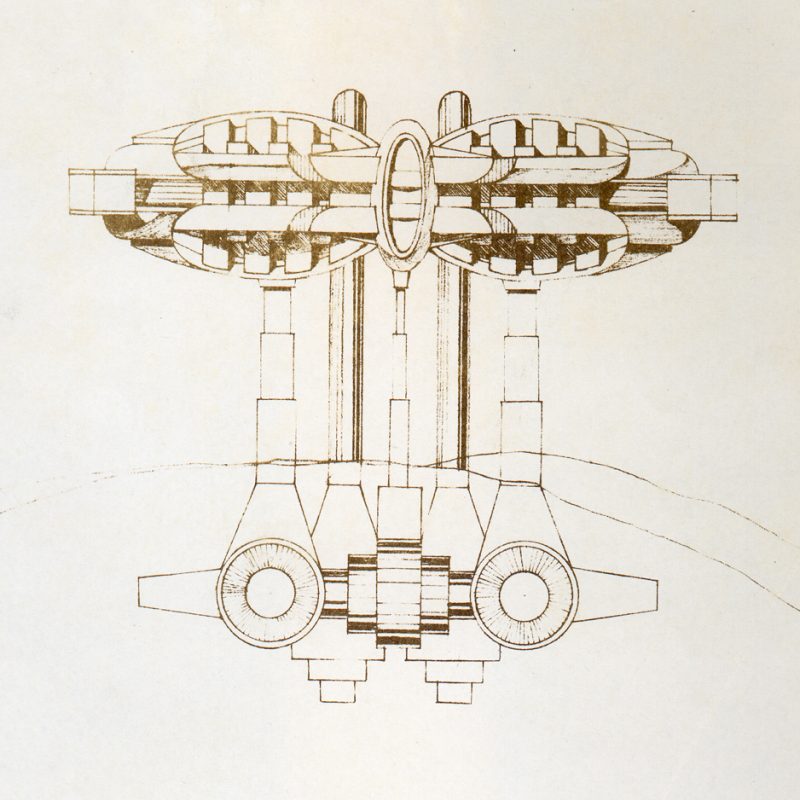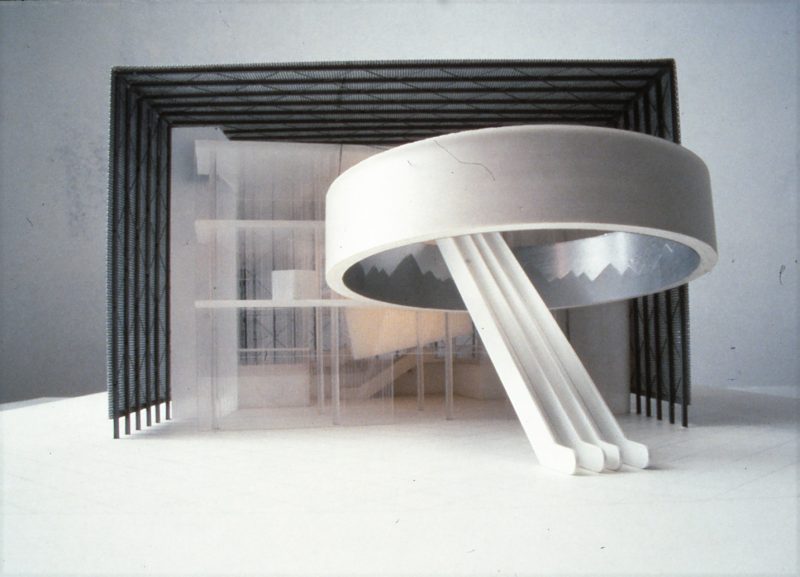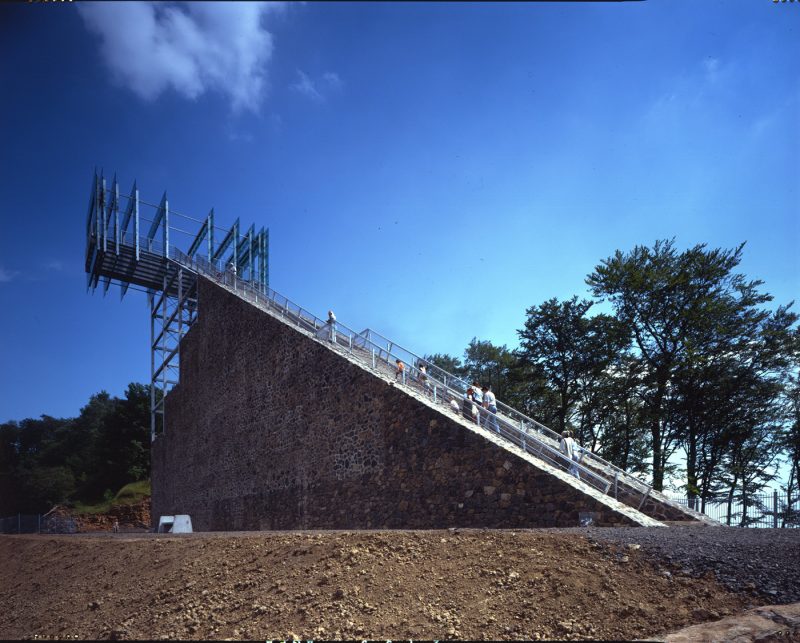






The „Lentos archive Haus-Rucker-Co“ exhibition in the Great Hall of the museum also explores the presence of the element air. In other words, the presence of that combination of gases that is an essential condition for terrestrial life, made up of 21% oxygen, 78% nitrogen, 0.93 % argon and 0.035% carbon dioxide. This mixture of gases is, as we all know, invisible and we only become aware of it when it smells bad, when it becomes unbearably hot or cold or if it takes our breath away. It is then that we call for climate control, for well-regulated temperatures, for the controlled environments that will guarantee our survival.
As early as 1971, Haus-Rucker-Co staged the exhibition COVER. Survival in a Polluted Environment at the Museum Haus Lange in Krefeld. Under the premise of a contaminated environment, we transformed the museum into an artificial oasis – a synthetic reserve with filtered air – by constructing an air dome. This show included the object CLIMATE 2 / BREATHING ZONE, which provides the title for the exhibition Haus-Rucker-Co. Breathing Zones.
The exhibition is divided into thematic zones, with seven floating textile scenic screens separating the 800-square-metre space into six sections.
Alongside ‚Climate Control‘, sub-themes of the exhibited archive include ‚Progressive Living‘, ‚City Nature, ‚Cosmos Vanilla‘ ‚Stories of Space‘ and ‚Sites of Communication‘.
The „Lentos archive Haus-Rucker-Co“ consists of works produced in the second half of the last century.
The breathing reflex, through which we inhale and exhale seven litres of air twelve to sixteen times per minute, becomes part of the exhibition, making us aware of the importance of the atmosphere surrounding planet Earth, and intended as a call to treat this reality with care.
4.5 billion years ago, Mars was surrounded by a dense, warm and humid atmosphere, creating the conditions for rivers and lakes to form on the surface of the planet. At that time, it was the Sun that blew much of its atmosphere into space and transformed it into a desert planet.
Four and a half billion ears later, we as earthlings must be aware that the global warming we are causing will lead to similar climatic prospects if we do not radically change the way we treat our world.
Zamp Kelp
(Exhibition Curator)




